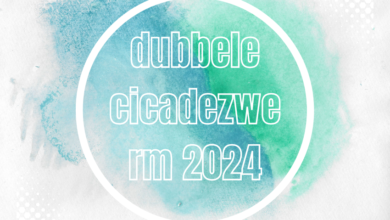The Art and Emotion of Poetic Writing jm379810

words are more than mere vessels of information; they are the threads that weave together the fabric of our emotions, thoughts, and experiences. At the intersection of art and emotion lies poetic writing—a form that transcends the mundane to touch the very essence of the human soul. In this article, we will explore the nuances of emotional tone and poetic writing, delving into the techniques that breathe life into words and create a lasting resonance within the reader.
2. The Power of Emotion in Language
Language, at its core, jm379810 is a conduit for emotion. The words we choose and the way we arrange them can evoke a wide range of feelings, from joy to sorrow, anger to serenity. Understanding the emotional undertone of language is essential for any writer aiming to connect with their audience on a deeper level.
Understanding the Emotional Undertone
Every word carries with it an emotional charge, a jm379810 subtle energy that influences how it is received. Consider the difference between “whisper” and “murmur,” or “shout” and “bellow.” Each pair of words conveys a similar action, but with distinct emotional nuances. To write with emotional impact, one must be attuned to these nuances and use them deliberately.
The Delicate Balance of Words and Feelings
Crafting an emotional tone is a delicate balance. Too much emotion can overwhelm the reader, while too little can leave them disengaged. The key lies in moderation and context—knowing when to let the emotion flow freely and when to rein it in. This balance is what gives writing its rhythm, its ebb and flow, much like the rise and fall of a symphony.
3. The Art of Poetic Writing
Poetic writing is more than just the arrangement of words in a pleasing manner; it is the expression of thoughts and emotions in a way that resonates deeply with the reader. It is an art form that combines the precision of language with the fluidity of feeling.
What Makes Writing Poetic?
Poetry in writing is characterized by its use of vivid imagery, jm379810 metaphor, and symbolism. These elements elevate the language, transforming it into something that is felt as much as it is understood. Poetic writing often defies conventional grammar and structure, embracing a more fluid and flexible approach that mirrors the natural flow of thoughts and emotions.
The Role of Rhythm and Flow
Just as a river flows naturally over rocks and around bends, poetic writing moves gracefully from one idea to the next. Rhythm and flow are essential components, guiding the reader through the text in a way that feels effortless and organic. This rhythm is often achieved through careful word choice, sentence structure, and the use of repetition or alliteration.
Metaphors, Imagery, and Symbolism
At the heart of poetic writing are metaphors, imagery, and symbolism. These tools allow writers to convey complex emotions and ideas in a way that is both powerful and subtle. A metaphor can turn a simple description into a profound statement, while imagery paints a picture that lingers in the reader’s mind. Symbolism, on the other hand, imbues the writing with layers of meaning, inviting readers to explore and interpret.
4. Emotional Tone: A Symphony of Sentiments
The emotional tone of a piece of writing is its underlying mood or jm379810 atmosphere. It is the emotional thread that runs through the narrative, guiding the reader’s emotional journey.
The Spectrum of Emotions in Writing
Emotions in writing are not limited to the extremes; they exist on a spectrum, from the faintest whisper of melancholy to the full-bodied roar of passion. Understanding this spectrum allows writers to create a more nuanced and layered emotional experience for their readers.
Crafting an Emotional Arc
An emotional arc is the journey that the reader takes as they move through a piece of writing. It is the rise and fall of emotion, the moments of tension and release that keep the reader engaged. Crafting an emotional arc requires careful planning and an intuitive understanding of how emotions ebb and flow.
Evoking Empathy Through Words
Empathy is the bridge that connects the reader to the characters, the narrative,jm379810 and the writer themselves. To evoke empathy, a writer must be able to tap into universal emotions and experiences, presenting them in a way that is relatable and authentic. This connection is what gives writing its emotional power, transforming it from mere words on a page to a shared human experience.
5. The Intersection of Poetry and Prose
The line between poetry and prose is not always clear. In fact, some of the most powerful writing blurs this line, creating a hybrid form that combines the best elements of both.
Blurring the Lines: When Prose Becomes Poetry
Prose becomes poetry when it transcends its function as a vehicle for information and begins to explore the realms of rhythm, sound, and emotion. This transformation often occurs when a writer prioritizes the musicality of language, using techniques like repetition, alliteration, and varied sentence lengths to create a sense of movement and flow.
The Dance Between Form and Freedom
Poetic writing is a dance between form and freedom. While poetry traditionally follows specific forms and structures, such as sonnets or haikus, poetic prose is more freeform, allowing the writer to play with language in creative and unexpected ways. This freedom is what makes poetic writing so powerful—it is unbound by the rules of conventional writing, free to explore the depths of emotion and experience.
6. Emotional Resonance: Connecting with the Reader
The true power of writing lies in its ability to resonate with the reader, to strike a chord that lingers long after the words have been read.
The Importance of Authenticity
Authenticity is the cornerstone of emotional resonance. When writing comes from a place of genuine emotion and experience, it has the power to connect with readers on a deep and personal level. Authentic writing is raw, unfiltered, and unapologetically true to the writer’s voice and vision.
Building a Bridge of Shared Experience
Writing is a shared experience, a conversation between the writer and the reader. By tapping into universal themes and emotions, writers can build a bridge between their own experiences and those of their readers. This connection is what gives writing its emotional impact, turning it into a shared journey rather than a solitary monologue.
How to Leave a Lasting Impact
The most memorable writing is that which leaves a lasting impact. To achieve this, a writer must be willing to take risks, to delve into the depths of human experience and emotion. This often involves exploring uncomfortable or difficult topics, but it is through this exploration that the most powerful and resonant writing emerges.
7. Case Studies: Iconic Examples of Emotional and Poetic Writing
To understand the power of emotional and poetic writing, we can look to some of the most iconic works in literature.
Analyzing the Works of Literary Giants
Writers like Virginia Woolf, James Joyce, and Gabriel Garcia Marquez have all mastered the art of blending emotion with poetic language. Their works are characterized by rich, evocative prose that draws the reader into the emotional world of their characters.
Lessons from Modern-Day Storytellers
Contemporary writers like Toni Morrison, Zadie Smith, and Ocean Vuong continue this tradition, using poetic language to explore themes of identity, loss, and resilience. Their writing is a testament to the enduring power of words to move and inspire.
8. Practical Tips for Incorporating Emotion in Writing
Incorporating emotion into writing is both an art and a skill. Here are some practical tips for enhancing the emotional depth of your writing.
Tapping into Personal Experiences
One of the most effective ways to infuse your writing with emotion is to draw from your own experiences. Write from a place of truth, and your readers will feel the authenticity of your words.
Techniques for Enhancing Emotional Depth
Use literary devices like metaphor, simile, and personification to add layers of emotion to your writing. These techniques can help you convey complex feelings in a way that is both powerful and accessible.
The Art of Revision and Refinement
Writing with emotion often requires multiple drafts. Take the time to revise and refine your work, focusing on the emotional arc and tone. This process is crucial for ensuring that your writing resonates with your readers.
9. Future of Emotional and Poetic Writing
As the literary landscape continues to evolve, so too does the role of emotion and poetry in writing.
Emerging Trends in Literature
There is a growing interest in hybrid forms of writing that blend poetry with prose, as well as in experimental narratives that challenge traditional storytelling conventions. These trends reflect a broader shift towards more emotionally resonant and innovative forms of expression.
The Role of AI in Creative Writing
Artificial intelligence is beginning to play a role in creative writing, offering new tools for writers to explore and experiment with language. While AI can generate text, the human touch—particularly in crafting emotional tone—remains irreplaceable.
How Digital Media is Shaping the Future
Digital media is transforming how we consume and create literature. From social media poetry to interactive storytelling, the possibilities for emotional and poetic writing are expanding in exciting new directions.
10. Conclusion
As we journey through the world of emotional and poetic writing, we come to understand the profound impact that words can have. They are more than just symbols on a page; they are the keys to the human heart, unlocking emotions and experiences that transcend time and place. In embracing the art of emotional and poetic writing, we open ourselves to the beauty and power of language, allowing it to connect us in ways that are both deeply personal and universally human.




